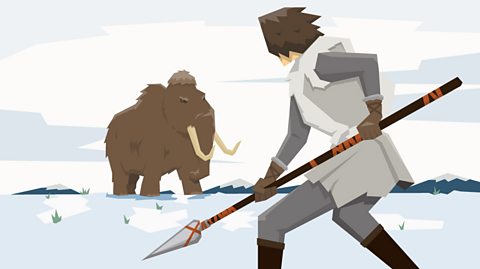Iron Age tribes and clans
During the Iron Age, Britain was divided into different tribes. Each one had their own leader and traditions. Many of these groups shared similar languages, religious beliefs and art styles with people who lived across Western Europe.
This included Iron Age people who lived in modern-day France, Belgium, Germany and Italy.
Some people call Iron Age Britons ‘The Celts’. The word ‘Celt’ comes from the ancient Greeks who called these people Keltoi, but it is not a name that they called themselves.
Created in partnership with English Heritage
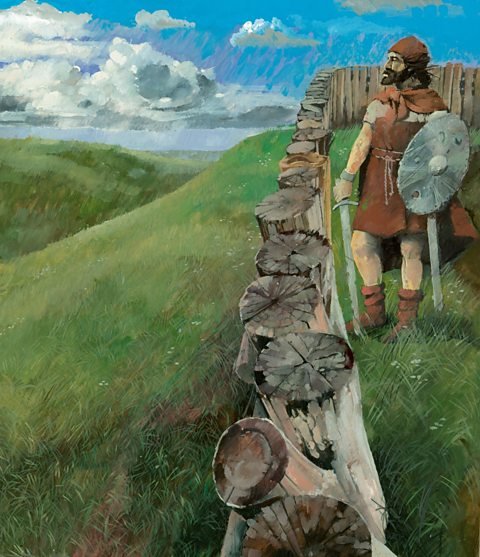 Image source, © Historic England (Illustration by Ivan Lapper)
Image source, © Historic England (Illustration by Ivan Lapper)What kind of food did people make?
Farming was important during the Iron Age. People grew their own crops to make food. They grew crops like wheat, oats and barley. They used cattle to make milk and cheese and for meat and leather. Cattle also helped them to farm by pulling ploughs and carts.
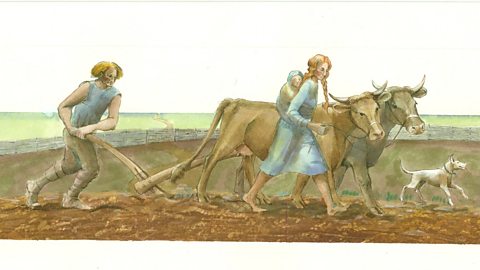 Image source, © Historic England (illustration by Judith Dobie)
Image source, © Historic England (illustration by Judith Dobie)People laid out boundaries around their fields with fences made of wooden stakes. The remains of the boundaries can still be seen on aerial photographs today. Long ditches and enclosures were built to help keep cattle together and to make fields where the cows could graze.
People also used horses for riding, to pull carts and for fighting in battles.
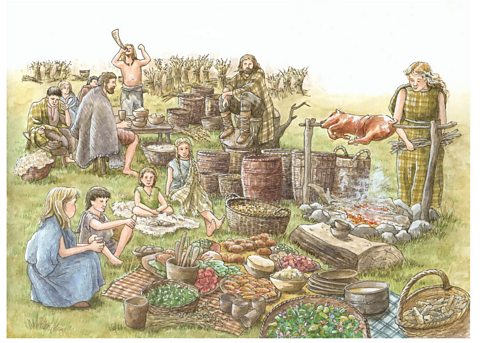 Image source, Clwydian Range and Dee Valley AONB
Image source, Clwydian Range and Dee Valley AONBWhat did people make?
Iron Age Britons made decorated weapons, as well as jewellery such as brooches and glass beads. They made personal belongings, like highly polished bronze mirrors and bone combs.
The harnesses and fittings for their horses and chariots were highly decorative.
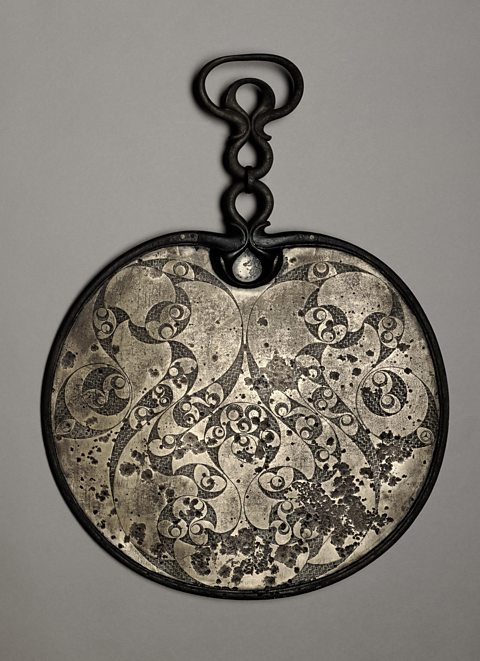 Image source, © Trustees of the British Museum
Image source, © Trustees of the British MuseumArt and craft
- Things were often decorated with curly or swirling patterns and animals, birds or plants.
- This type of decorative craftsmanship is often called ‘Celtic art’ or ‘La Tène art’.
- La Tène is a place in Switzerland where many of these things have been found.
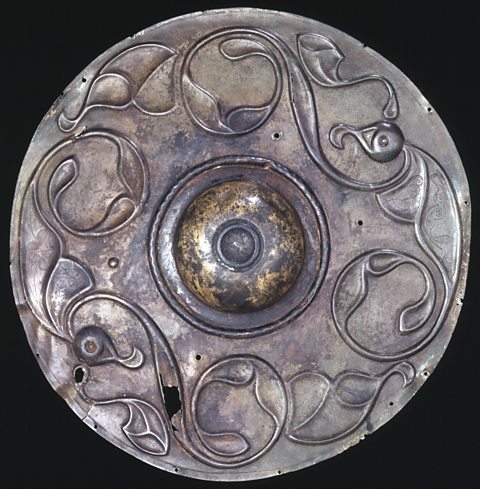 Image source, © Trustees of the British Museum
Image source, © Trustees of the British MuseumWeapons and armour
- Long swords - These were useful for cutting and slashing. Daggers were for close range combat. These would likely have been carried in decorated scabbards (like a case) made of bronze, wood or leather.
- A spear or javelin - These were used for throwing at the enemy at a distance. A shield made of wood or leather was used for protection.
- Helmets - These protected the wearer's head from slashing swords.
- A neck-ring or ‘torc’ - A warrior would wear this metal (iron, bronze or gold) ring around their neck. It was a status symbol.
 Image source, © Trustees of the British Museum
Image source, © Trustees of the British Museum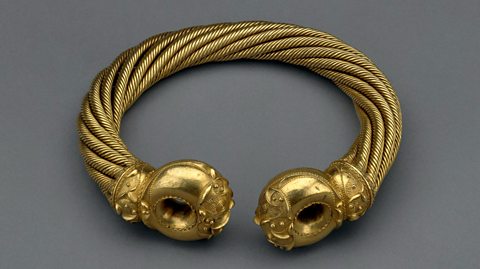 Image source, © Trustees of the British Museum
Image source, © Trustees of the British MuseumActivity: Quiz – Life in an Iron Age hill fort
Get ready for the SATs with videos, activities and games
Refresh your knowledge and practise your skills for the maths and English SATs.

More on Prehistoric
Find out more by working through a topic
- count10 of 21
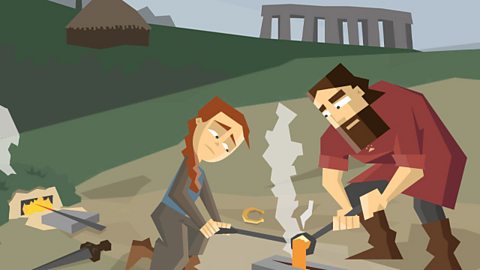
- count11 of 21
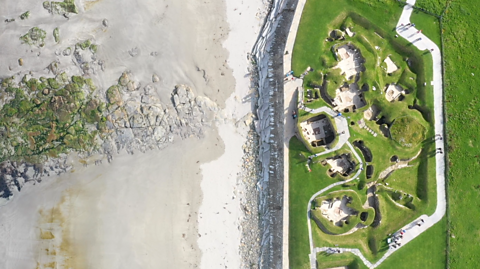
- count12 of 21
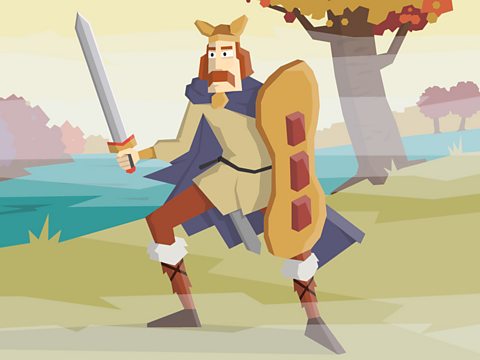
- count13 of 21
